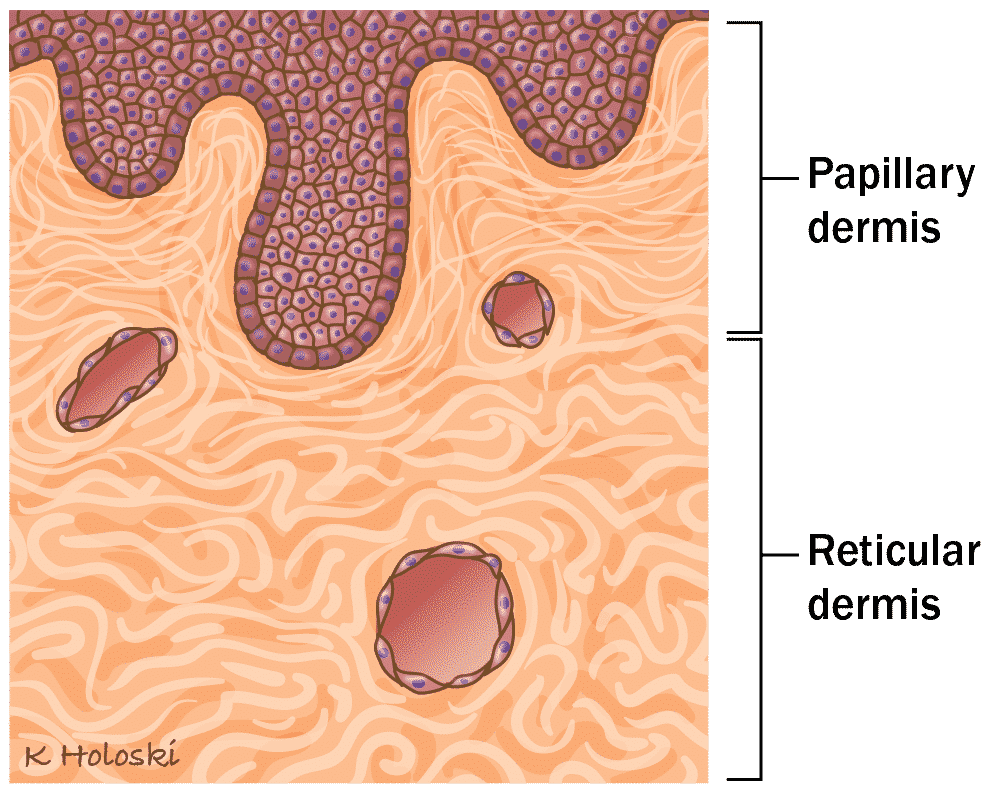The Anatomy of the Skin
In order to fully understand skin cancer, it is helpful to understand the composition, function, and anatomy of the skin. The skin is the largest organ in the body, and is made up of three main layers: the epidermis, the dermis and the subcutaneous tissue (which is also called the hypodermis or the subcutis). Each of these layers contains many different types of cells.


Epidermis
The epidermis is the outermost layer of the skin. It is made up of multiple different layers that may change slightly depending on the location in the body. The main cell types that exist in the epidermis are keratinocytes, melanocytes, Merkel cells and Langerhans cells:
- Keratinocytes
These cells make up the majority of the epidermis. They form a barrier for the body against the outside world. Keratinocytes in the deeper layers of the epidermis are called basal cells. Cancers that develop from these cells in the deepest epidermal layer are called basal cell carcinomas. - Melanocytes
These cells make a protein called melanin, which is a pigment that gives skin a darker color. More melanin means darker skin. Melanin also protects skin cells from ultraviolet damage. Malignant melanoma develops from this cell type. - Merkel Cells
These are “neuroendocrine cells,” meaning that they look like nerve cells but also have some features of hormone cells. Their exact function is not known, but they are thought to play a role in sensing light touch. Merkel Cells can give rise to a form of skin cancer known as Merkel Cell Cancer. - Langerhans Cells
These are immune, or infection-fighting, cells. They exist in the epidermis, as well as in the dermis, in lymph nodes, and in other locations throughout the body.
Dermis
The dermis, generally the thickest of the three skin layers, contains blood vessels, lymphatic vessels, hair follicles, sweat glands, oil glands, nerve endings, and fibrous tissue. The dermis is made up of two layers: the papillary dermis and reticular dermis.
Subcutaneous Tissue
The subcutaneous layer, also called the hypodermis or the subcutis, is the innermost layer of the skin. It contains fat cells and collagen cells, as well as bigger blood vessels and lymphatic vessels.

Clark Level of Invasion
The “Clark Level of Invasion” is a term used on pathology reports to describe what layer of the skin the cancer has invaded into, regardless of how thick the tumor is. The greater the Clark Level, the deeper the cancer has grown into the skin. The Clark Level is used in the staging system for skin cancers, and a greater Clark level is considered an adverse feature that could upstage a skin cancer.
The 5 Clark Levels of Invasion of Skin Cancer

- Level I
The cancer is limited to the epidermis. - Level II
The cancer invades partly into the papillary dermis. - Level III
The cancer completely fills the papillary dermis but does not extend into the reticular dermis. - Level IV
The cancer extends into the reticular dermis. - Level V
The cancer extends into the subcutaneous tissue.













